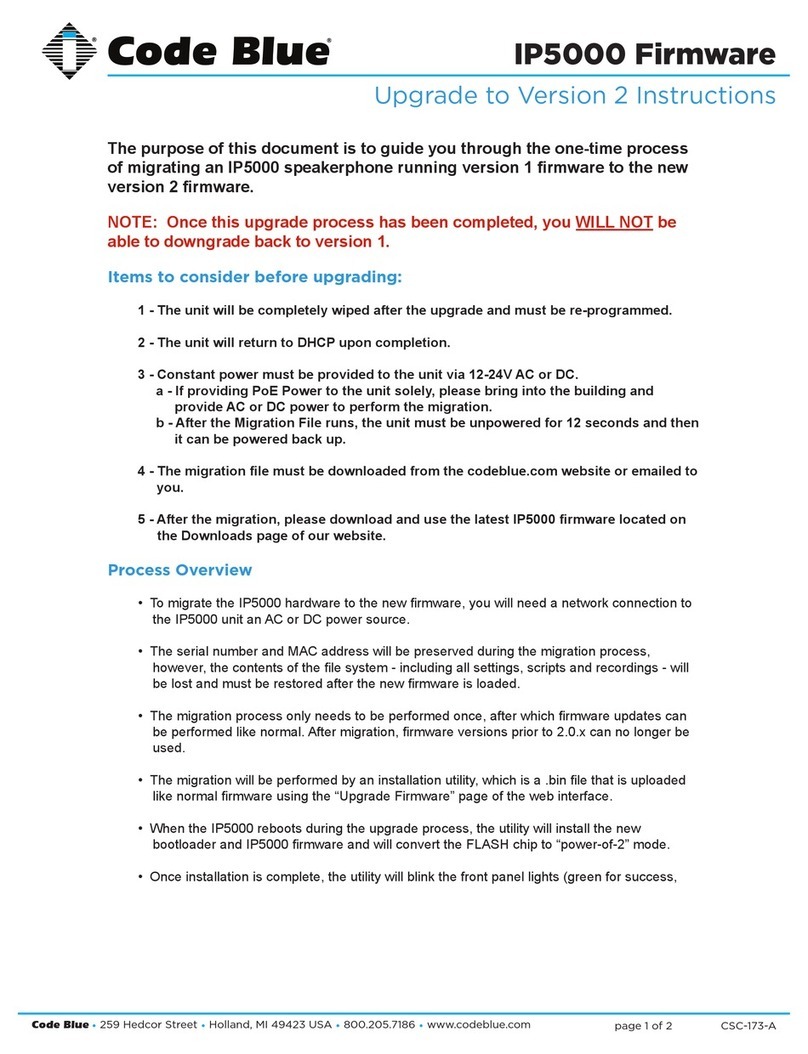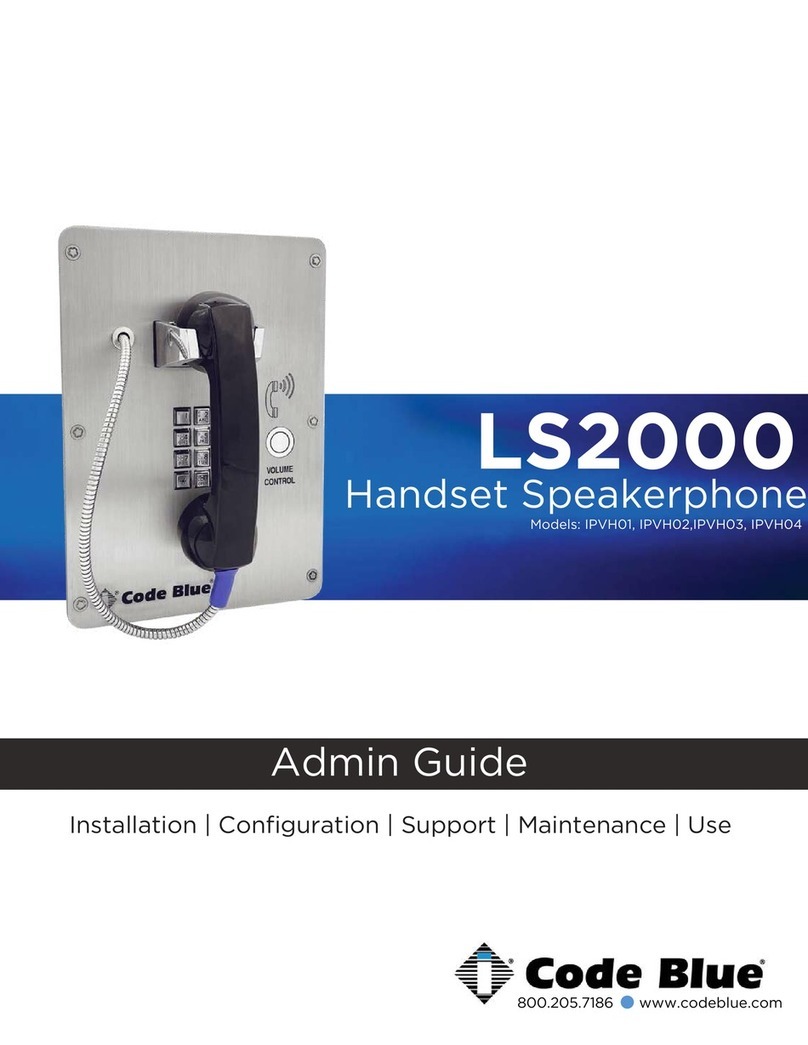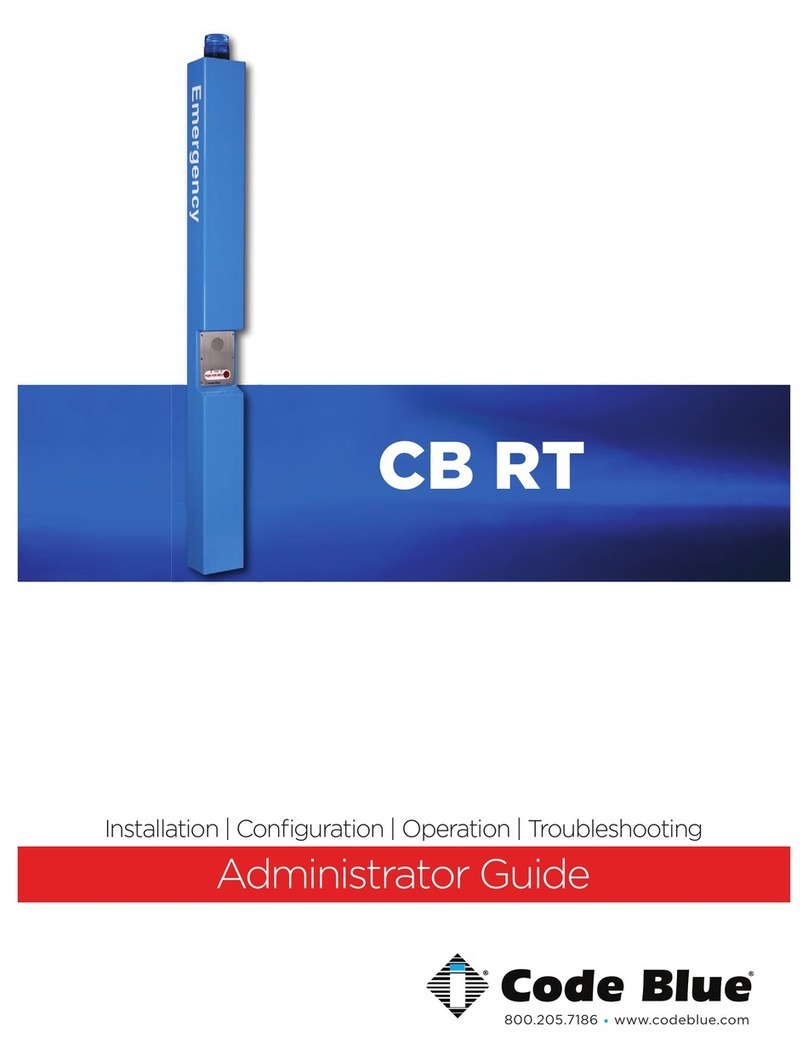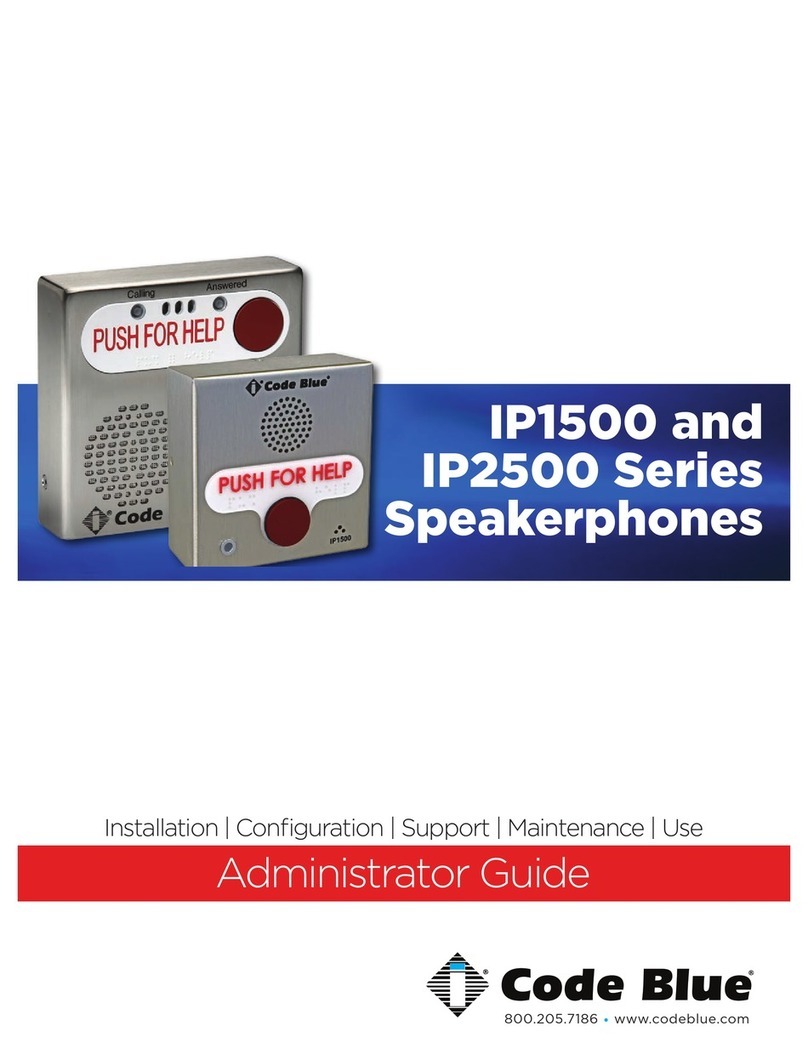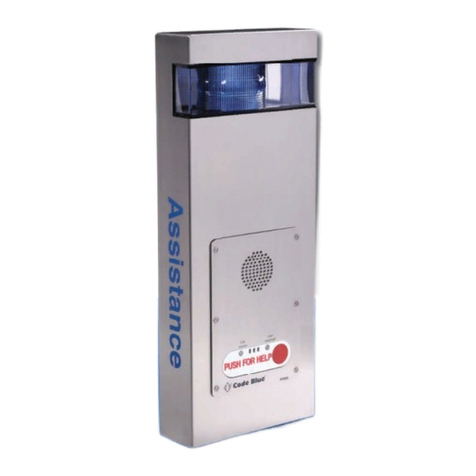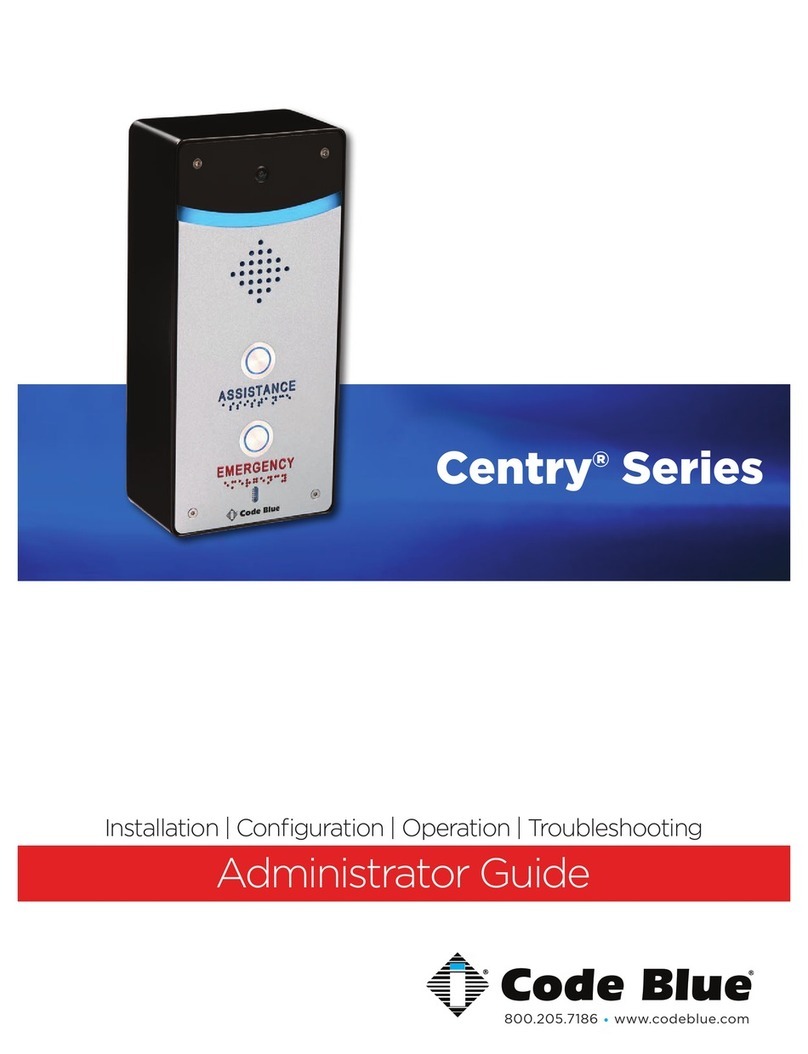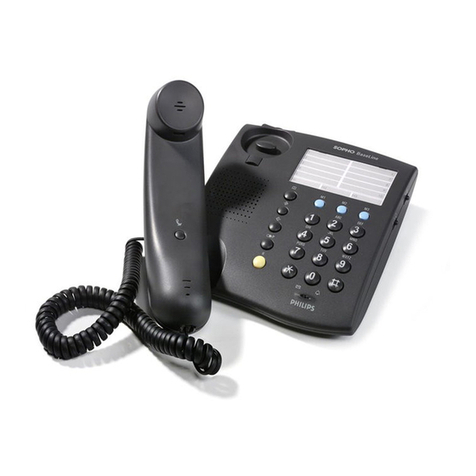
Code Blue •259 Hedcor Street •Holland, MI 49423 USA •800.205.7186 •www.codeblue.com GU-139-Tpage 2 of 33
IA4100
Administrator Guide
Table of Contents
Section Page
2 Introduction................................................................................. 3
3 Getting Started............................................................................ 4
4 Circuit Board Connector List..................................................... 6
5 Installation................................................................................... 7
6 Optional CB 6-f (Flush Mount Enclosure) Installation............ 8
7 Connecting Power Sources....................................................... 9
8 Connecting PSTN/PBX Services.............................................. 10
9 Connecting Auxiliary Devices.................................................. 11
10 Installation Into Code Blue Units............................................. 12
11 Basic Programming................................................................... 13
12 Advanced Programming............................................................ 14
12.1 Initial Call-In Commands................................................ 15
12.2 Commands During a Call............................................... 16
12.3 Programming Commands.............................................. 17
13 IA3000/3100 Changeover to IA4100 Instructions.................... 25
14 Button and Activation Specications.................................... .. 26
15 Troubleshooting......................................................................... 27
16 Warranty & Regulatory............................................................... 33
Notice
Every effort was made to ensure that the information in this document was complete and accurate at
the time of printing. However, information is subject to change.
IA4100 Full Duplex Disclaimer
This mode of operation is dependent on the systems/services that the IA4100 is connected to. Vari-
ous systems, including VoIP systems, Analog Terminal Adapters, etc. may cause adverse functional-
ity due to multiple acoustic echo cancelling points throughout the system conguration.
TCP/IP
Customers may experience differences in product performance, reliability and security depending
upon network congurations/design and topologies, even when the product performs as warranted.

